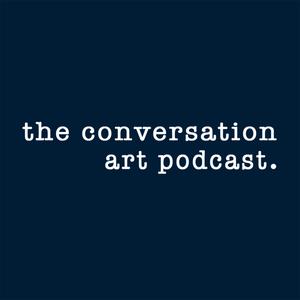
The Conversation Art Podcast
Michael Shaw
artist interviews and three-way roundtables with artists, art writers, dealers, and collectors...conversations from the art world's back rooms.
- 1 hour 6 minutesJournalist Bianca Bosker: a ‘normie Philistine’ dives into the art world working for artists, dealers and as a museum security guard in attempt to unravel its mysteries
Bianca Bosker, journalist and author of Get the Picture, talks about:
The genesis of her deep dive into the art world - working with gallerists and artists, doing art fairs and galleries with collectors, and doing a stint as a security guard at the Guggenheim Museum – which largely came out of her need to learn whether she could learn to ‘see’ like an artist, as opposed to a ‘normie Philistine,’ as she was called by many (she was also, as a journalist, called “the enemy”); the elitism, opacity and various exclusionary art world rules she discovered from dealers and artists she encountered through her immersion process, and how “dishearteningly little” artists themselves often knew about how the art world works; how parts of the art world use secrecy as part of their survival, to build mystique, among other reasons; how she worked for five different artists in the course of researching the book, but ultimately only wrote explicitly about two – Julie Curtiss and Amana Alfieri – in the book; how Context – everything about the artist (social cache, etc.) EXCEPT the art itself is often overly valued, and something she pushed back against; how she was drawn to working with emerging artists, and wound up working with the painter Julie Curtiss at a turning point moment in her career, in which she was both starting to make a living from her work but also getting bullied on social media for her work’s huge price escalation on the secondary market; how brave it was for Julie to let Bianca so thoroughly into her studio and make herself so vulnerable; and why she got so pumped after making sales while on the floor of the Untitled Art Fair with Denny Dimin gallery, without actually getting any payment for those sales (due to journalistic integrity).
6 April 2024, 8:17 pm - 56 minutes 21 secondsValerie Werder turns her intense years working for a blue-chip gallery into an inspired novel, Thieves
This episode features the 1st half of the full episode. To get the full version, please visit: Patreon.com/theconversationpod The Conversation Art Podcast | creating a podcast that goes behind the scenes of the art worlds | Patreon
Recovering art worker and author of the novel Thieves, Valerie Werder talks about:
Her entrance into the art world via her demanding position at a fancy gallery in her attempt, as a newbie, to get access and proximity to the art world; her ability to conform and comply under pressure (in the gallery environment), and the what the flip side of that looks like; what the coercion, that came thru various forms of care and the engendering of a ‘family’ dynamic at the gallery, looked like and how it played out, including through fancy paid meals and credit for fancy clothes so she could look and act the part; how working at a gallery gave her a completely different relationship to language, including the quick turnaround she had to produce, becoming a ‘language producing machine’ in the process; the craft of writing a gallery press release, and how she ultimately became, upon writing her novel, the ‘commodity’ herself that she in turn needed to sell.
In the 2nd half of the episode, Valerie talks about: her creative workarounds to promote her book, including using two very different kinds of publicists, and how throughout her professional career she’s been aware of and pushed against the given economic constraints, and how she believes it’s important to be explicit and unashamed about everything from her day jobs to the creation of her (writing) brand; the difference between the mythologizing/branding of artists back in the days of a much smaller (yet cut-throat) New York art world (of Donald Judd, Robert Smithson and Walter De Maria et al.) and the more diffuse, digital world of today, and how in her book she wanted to explore the legacy and imprint of the peripheral art world figure ‘Valerie’ the character who herself was invisible but whose writing, through catalogues and press releases, was/is all over the art world, and in the process the real Valerie the writer becomes a visible figure, a brand herself; the strange relationship she had with her former gallerist boss, whom she became the voice for in press releases and personal emails and even interviews, and how she studied her and had the writings of her voice vetted by the gallerist herself, for which she was valued highly for absolutely being ‘her voice;’ how she wrote her book on an ‘unpaid sabbatical’ from her job at the gallery, in a friend’s cabin in Tennessee, and the complicated circumstances in which she quick her job upon returning from that ‘sabbatical,’ which she told the gallery was an artist residency; her doubts about whether her gallerist employer read her book (Thieves); the actual front desk worker (aka gallerina) protocol employed at the gallery where she worked, as far as how to treat different people who came into the gallery, whether they were VIPs who should be greeted by name (through the gallerina memorizing the faces of those collectors) or lowly artists/nobodies who could be ignored; her experience getting a once-over from a wealthy collector at the gallery, and giving that once-over right back to him; Frank Stella and his provocative artwork titling, and how it somehow wasn’t Valerie’s job to really do research about his work, despite the gallery selling it.
24 February 2024, 8:08 pm - 1 hour 27 minutesEpis. 357- Seattle artist Debra Broz on her studio routines, love of work as well as successfully navigating "the feel bad machine" that is Instagram
Seattle-based artist and restorer Debra Broz talks about:
Living in Seattle, where she moved to from Los Angeles a year and a half prior to our call; how Seattle is full of rule-followers who are also anarchists/anti-capitalists; how she found her Seattle studio, where it was important to have decent heat, especially for her sculptures; her reasons for leaving L.A. for Seattle, and some of the lifestyle differences between the two cities, and how welcoming Seattle has been to her as a new artist; how various sites, specifically Colossal and the Jealous Curator, have been huge in growing her art & design-focused Instagram followers; her pacing and general approach towards her IG feed, where she’s made peace with the fact that she can only go as fast as she can go, nor does she want to try and gamify the system, and how, ultimately, IG is a “feel bad machine;” how Instagram has been punishing people who use it to have sales; the “enshitification” of apps (including IG and Tik Tok) and how it’s made our experiences on them so much worse; her sculptures, made from ceramic figurines, which were originally made for American middle-class homes; how the best places to find her sculptural elements are “out in the wild,” i.e. thrift stores, as well as friends giving her objects, which is her favorite way to acquire her materials; the “if we look for what we need, we’ll find it” serendipity that’s a driving force in Debra’s making process; and how the meme, “I didn’t realize being an artist was making the same thing 1000 times until you die,” is a sentiment very familiar to most artists.
27 January 2024, 10:14 pm - 1 hour 44 minutesZombie Formalism, Debt aesthetics, and AI & Art: New Yorker writer/critic Chris Wiley
Chris Wiley- Artist, New Yorker photography critic, and contributing editor at Frieze - talks about:
His fleeing upstate to the Catskills during the pandemic, and what his relative disconnect from the art world and the city has been like since the move (though he still keeps a small apt. in the city); the differences between English and American artists in terms of academia vs. the market; his epic two-part articles on Zombie Formalism, which covered not just the movement as a market phenomenon but also what it’s led to, including economic precarity and eventually what Wiley has dubbed ‘debt aesthetics;’ the term from the Crypto phenomenon that Wiley applies to many artists of Zombie Formalism, ‘Walk Away Like a Boss,’ to describe those who were able to earn a very solid chunk of money over their brief careers, often parking it in real estate for long-term security; how Zombie Formalist paintings were, as he put it, “’fast, fungible and friendly,’ just like what currency is;” artists who have the ‘it’ factor, an authenticity demonstrating they would be making their art no matter what; the great promise of a Universal Basic Income for artists, particularly in the context of a debt aesthetics that virtually forces artists to compromise their visions instead of getting to be weirdos; his current thoughts on the implications of AI, which he’s been interested in for a long time, having a father who was interested in computers and science fiction when he was growing up; how and whether artists will be safe in terms of jobs and sustainability in an A.I.-dominant landscape, and how the art world isn’t ready for the kind of speed with which A.I. advances will affect art; the AI-generated photography of Charlie Engman, who has been making a bizarre and prolific body of work using the platform Midjourney, despite being a ‘technophobe,’ in his own words; the challenged viability of a career as an editorial photographer with the rise of A.I.; and how his article on A.I. and Charlie’s work, in The New Yorker, pissed a LOT of people off, and why.
2 December 2023, 10:46 pm - 1 hour 24 minutesEpis: 354- the Art Thief, the remarkable story of art history's most prolific stealer, with author Michael Finkel
Michael Finkel discusses the remarkable story of Stéphane Breitwieser, the subject of his recent book, The Art Thief, including:
The genesis of the book project, starting with a three-paragraph article, and eventually turning into a 10+ year-project; the style and methods of theft that Breitwieser and his partner, Anne-Catherine Kleinklaus, put to work; Michael’s favorite Breitwieser crimes; his widely oscillating perception of Breitwieser, from a selfish brat to ‘the best art professor I’ve ever had;’ how Breitwieser protected both Anne-Catherine and his mother by lying on their behalf, but ultimately told the truth to authorities when it came to his own role in the crime sprees; Breitwieser’s Icarus-like trajectory playing out over several years as a result of his increasing addiction to art theft; a teaser of an ongoing plot point related to one of the Art Thief’s main characters, one which may very well be revealed in the soft cover release of the book; and how what Breitwieser and Christopher Knight, the protagonist of Finkel’s earlier book, The Stranger in the Woods, have in common is that they’re extreme outliers who make their own rules.
14 October 2023, 10:50 pm - 1 hour 30 minutesEpis. 351- veteran co-host Deb Klowden Mann joins to discuss Money on the Wall, an epic profile of dealer Larry Gagosian
This special episode features return-guest-but-more-co-host Deb Klowden Mann to discuss the recent New Yorker profile of mega-dealer Larry Gagosian. Deb starts us off by updating us on her closing of her eponymous gallery due to multiple health issues, which made the work unsustainable. We follow that update with our discussion of the article, including:
Our respective histories with Gagosian and/or his collectors mentioned in the article; how Gagosian’s decision to allow the profile may be because it humanizes him to the audience, but also, as Deb proposes, to make him and the gallery more appealing to younger artists they could possibly take on; Deb sites a book from the early ‘80s, “The Art Dealers: The Powers Behind the Scene Tell How the Art World Really Works,” which illustrates how when it comes to collectors treating art as investments, it’s been happening for nearly 200 years; how the funding that goes to high-priced artworks sometimes comes from the same people who fund grants/grant foundations, Deb suggests, and she advocates for a more transparent, as well as more evenly distributed financial model for the art world(s); Gagosian’s gallery courtship of the English artist Issy Wood, and what that scenario points to as far as his courtship process, the future of the gallery and his legacy plans, and the vulnerability apparent in that dynamic; Deb’s desire for more really well researched and written pieces (like this one by Patrick Radden Keefe) about how everything works in the art world; and finally, Deb brings up the book The Art of Death as a counterpoint to one’s amassing of power and wealth to stave off mortality, because in many cultures up until the 1800’s, one of the main functions of art was in fact to help people understand death as part of life and prepare them for it.
2 September 2023, 10:16 pm - 1 hour 37 minutesEpis: 349- Narsiso Martinez on his epic story from Oaxaca to California, from picking produce in the fields to becoming a full-time artist
Long Beach-based artist and former produce field worker Narsiso Martinez talks about:
Growing up in a small town in Oaxaca, Mexico (Santa Cruz Papalutla), with several brothers and sisters, and a mom and dad who were often on the road for work; his resistance and questioning of working in the fields, something his family did when he was growing up as a way to have food on hand in tighter times; a very condensed version of his travails in crossing the border from Mexico into the U.S., which took him 4 tries to do; his initial settling in Los Angeles with one of his brothers, who is in the car upholstery business; going to an adult high school to learn English as well as other classes, on his way to going to Cal State Long Beach for an undergraduate, and eventually an MFA degree; how he made his adult high school studies a higher priority than his day jobs, so if a job conflicted with school, he would leave the job; his ups and downs at LA City College, where he got his associate degree and may have gone into biology if it wasn’t for his lack of resident papers; what it was like working in the fields – physically as well as mentally – up in Washington state, where he picked produce including asparagus, cherries and apples, both for one full year, as well as over the summers between Cal State Long Beach school years; his gradual discovery of produce boxes that became the surfaces/objects for his paintings, starting with collecting a few boxes from a Costco; his complex thoughts and feelings about class differences, including thinking of himself as something of a role model for who people can become, as well as the importance of education, and family support, in making his long journey, which he describes as many different lives.
5 August 2023, 9:12 pm - 1 hour 3 minutesEpis: 347- Alexis Rockman on 'owning' natural history
Connecticut- and New York City-based artist Alexis Rockman talks about:
His semi-exodus from Manhattan, where he’s lived his whole life, to a fairly rural part of Connecticut called Warren; leaving his Tribeca studio of 33 years and building a new one on the property of their house in Warren; his early love and interest in animals through his anthropologist mom’s encouragement which led to everything from keeping fish, turtles and iguanas in his childhood room to going scuba diving and spending a lot of time in Australia, where his stepfather was from, encountering wombats, Komodo dragons, and large flightless birds; his appreciation of science fiction movies of the late 60s and early 70s, and how the ideas in those movies were an influence on his apocalyptic paintings; the origins of his painting ‘Manifest Destiny,’ which is in the collection of the Smithsonian Museum; his recent work, which is in conversation with historic painters – Courbet, Clyfford Still, Peder Balke – and the joy of painting in addition to addressing climate change; how he jumped for joy for ‘owning’ natural history, as a painter, when he first established his artistic vision at the start of his career in the mid-1980s; working as a vision artist for films, including Life of Pi and the remake of the Little Mermaid; and how he feels about his relative ‘fame,’ and the ebbs and flows of success.
1 July 2023, 8:38 pm - 1 hour 44 minutesEpis: 345- House-hunting with a Billionaire
Hungarian billionaire Gabriela and artist and architect Andi Schmied talk about:
Andi’s residencies, across Asia and Europe, as well as the Triangle Arts residency in DUMBO, Brooklyn, where she first connected with her fellow Hungarian, the billionaire Gabriela; some of the developments around the world that led her to the realization that there’s a glut of useless, ultra-wealthy housing that’s not actually being used, particularly a complex of villas about 100 miles outside of Beijing, where the groundskeepers wound up squatting in the empty units; doing a residency in New York in 2016, when she encountered Gabriela for the first time, who would become her key collaborator for what would her project ‘Private Views;’ the world of ultra-high end real estate, including the dynamics of a real estate agent showing a penthouse apartment of a very tall building to a client, and how Gabriela navigated these experiences; the questions the real estate agents showing these penthouses and other very expensive apartments asked, and what that revealed about the world of the ultra-wealthy; the various ways super-tall buildings in Manhattan are impacting everything from income inequality to changing the flora and fauna in Central Park from the long shadows they cast.
4 June 2023, 6:21 pm - 1 hour 26 secondsArt Adivisor Lisa Schiff- a Re-Release of Episode 99 from 2015
Art Advisor Lisa Schiff has been in the news over the last two weeks, because of lawsuits being filed against her by clients who weren't given the artworks they paid for, and Schiff has subsequently filed for bankruptcy.
How did this happen? Was there any indication, from the warm and thoughtful conversation I had with her in late 2014, that anything like this would happen down the road?
We re-visit Episode 99, from early 2015.
26 May 2023, 6:58 pm - Bonus Epis: 344- the Bay Area art scenes, healing out of ancestral trauma, and seeing Philip Guston through the lens of a Jew: artist Alex Nowik
In Bonus Episode 344, San Francisco and northern Virginia-based artist Alex Nowik talks about:
The art communities he’s been part of in the Bay Area, which have been fruitful for him as a self-taught artist, and how he feels that there are little ‘bubbling’ art scenes that are continuing to thrive around the Bay, whether in Oakland or San Francisco, with young artists; his complicated family background, including a half-Japanese, half-Polish mother who grew up in California, often passing as white (she sometimes called herself ‘Eurasian’) and his father, who was from Poland and escaped the Holocaust through a harrowing series of hidings and passing as a gentile with fake names until he was able to emigrate to Montreal; his ability to distance himself from his parents’ respective traumas; his various day jobs over the years, which he describes positively, particularly working as a gardener; his car-free lifestyle both in SF and in Virginia, just outside of D.C.; and his thoughts on the Philip Guston exhibition at the National Gallery (which he’s seen twice), and how he thinks about the controversy around Guston’s hooded figures in terms of the Jew in America and assimilation.
To access this Bonus Episode of the show, please consider supporting The Conversation on Patreon here:
20 May 2023, 5:26 pm - More Episodes? Get the App
Your feedback is valuable to us. Should you encounter any bugs, glitches, lack of functionality or other problems, please email us on [email protected] or join Moon.FM Telegram Group where you can talk directly to the dev team who are happy to answer any queries.
 Hyperallergic
Hyperallergic
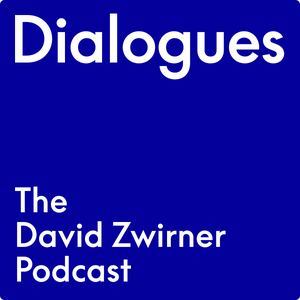 Dialogues: The David Zwirner Podcast
Dialogues: The David Zwirner Podcast
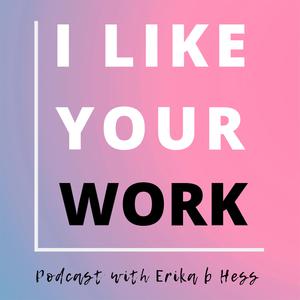 I Like Your Work: Conversations with Artists, Curators & Collectors
I Like Your Work: Conversations with Artists, Curators & Collectors
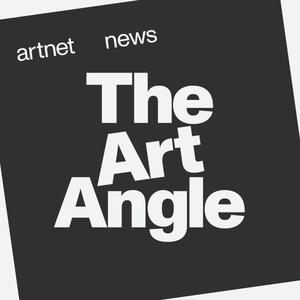 The Art Angle
The Art Angle
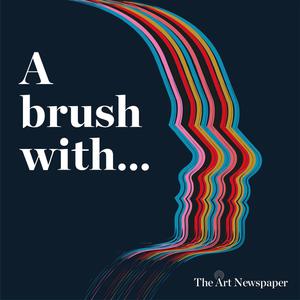 A brush with...
A brush with...
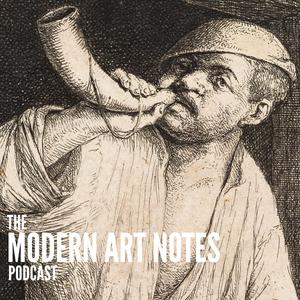 The Modern Art Notes Podcast
The Modern Art Notes Podcast